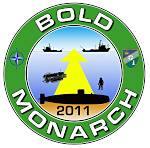Minister for Defence Materiel Jason Clare today announced that up to seven retired F‑111 fighter jets will be made available to Australian aircraft museums and other historical organisations.
The iconic F‑111s were the front line of the Australian Defence Force for almost four decades.
Following their retirement in December last year, aircraft museums and historical organisations around the country expressed strong interest in displaying the F‑111.
“I’ve met with museum operators around the country and I understand how important it is that as many Australians as possible have access to this piece of Australia’s aviation history,” Mr Clare said.
“I have therefore decided that up to seven F‑111s will be made available to Australian aircraft museums and other historical organisations.”
The aircraft will be loaned to museums so that Defence can continue to manage the risk of hazardous material in the aircraft like asbestos and will be subject to a number of conditions to ensure the safe preservation of the aircraft.
These include:
- Housing the aircraft in a completely enclosed facility;
- Ensuring members of the public are prevented from climbing into engine intakes and exhaust ducts;
- Limiting, controlling and supervising public access to the cockpit;
- Preventing the public from opening aircraft panels;
- Supervising public access to the wheel well and weapons bays;
- Completing specified preservation maintenance; and
- Meeting Commonwealth auditing and reporting requirements.
As the aircraft were produced in the United States, organisations selected to display the aircraft will be subject to the approval of the US Government under the International Traffic in Arms Regulations.
Interested organisations will be asked to respond to a Request for Offer which will be released by Defence later this year.
F‑111 aircraft will also be preserved at the following RAAF Bases across Australia:
- RAAF Base Amberley, QLD (two aircraft);
- RAAF Museum at Point Cook, VIC (two aircraft);
- RAAF Base Edinburgh, SA (one aircraft); and
- RAAF Base Wagga, NSW (one aircraft).
“The F‑111s were affectionately known as ‘Pigs’ because of their ability to hunt at night and fly low in the weeds thanks to their terrain-following radar,” Mr Clare said.
“They were perhaps best known for their fiery dump and burn exhibitions at air shows around Australia.
“They could fly at two-and-a-half times the speed of sound and when they retired were still one of the fastest strike aircraft in the world.”
Press release
Ministerial Support and Public Affairs,
Department of Defence,
Canberra, Australia

 von
von 